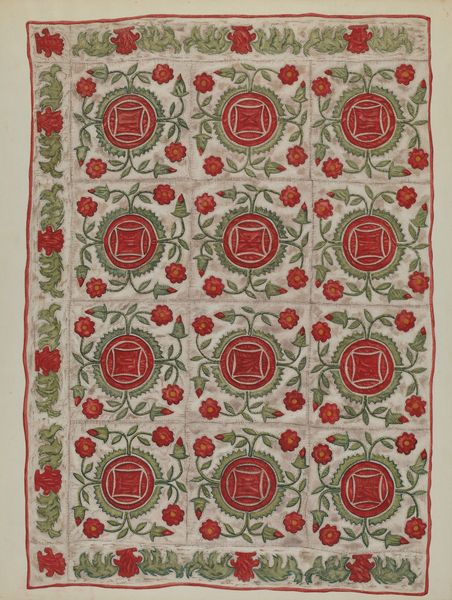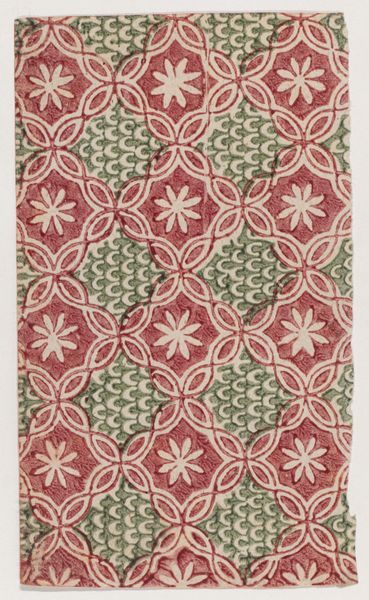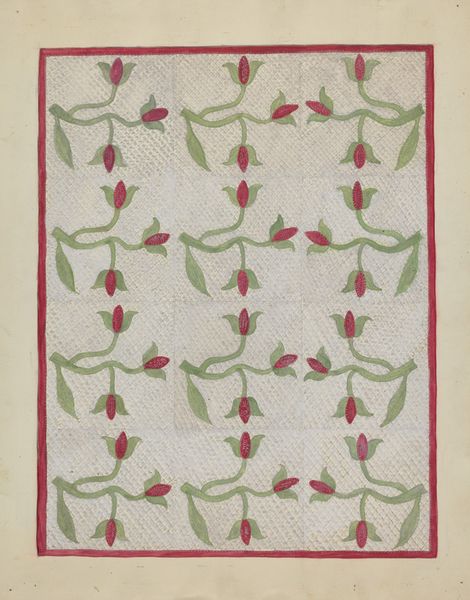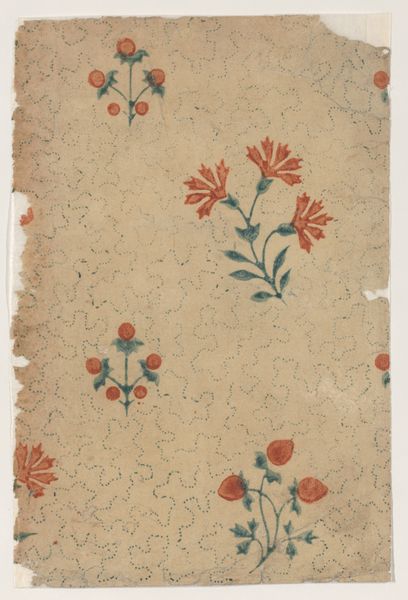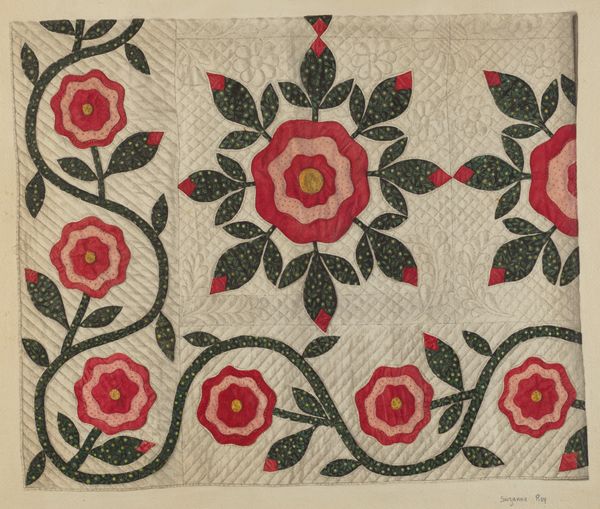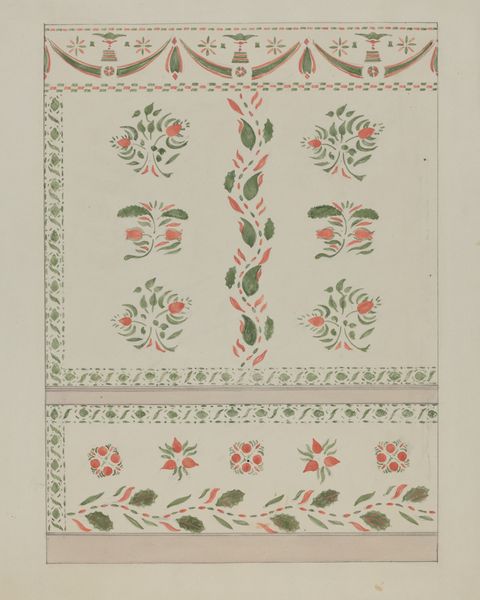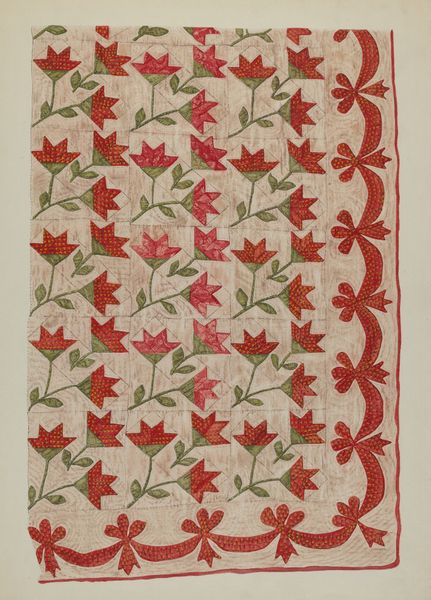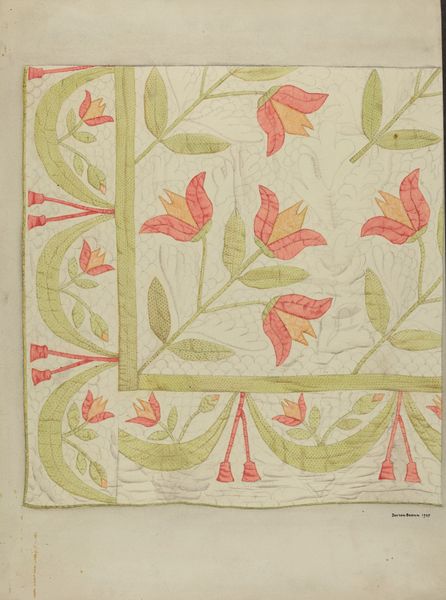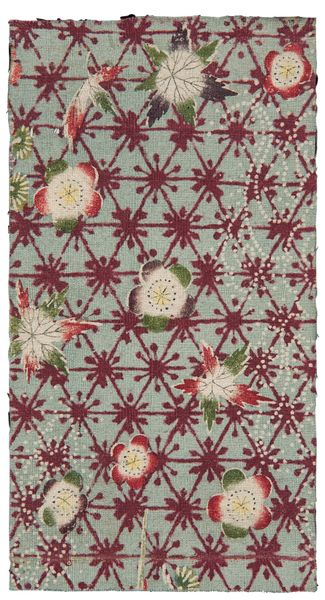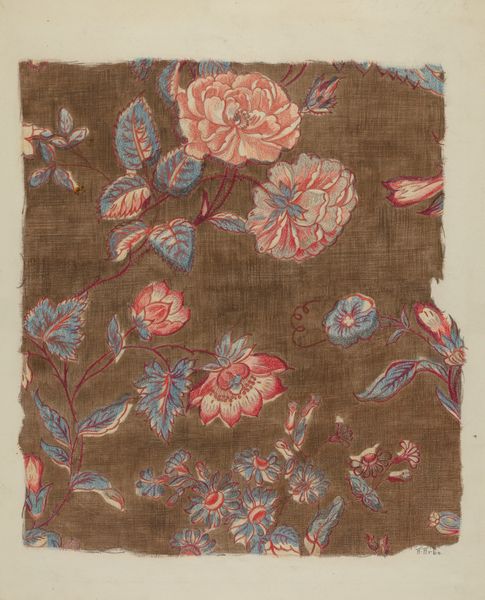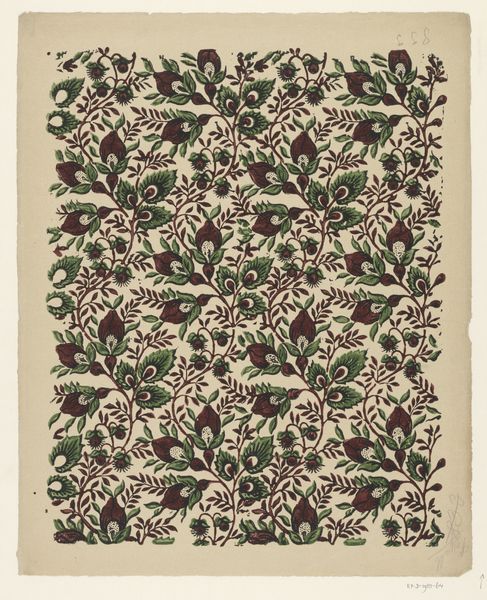
drawing
#
drawing
#
organic
#
organic pattern
#
textile design
Dimensions: overall: 50.7 x 36.2 cm (19 15/16 x 14 1/4 in.)
Copyright: National Gallery of Art: CC0 1.0
Editor: We're looking at a drawing from 1938 called "Quilt - Rose Design" by Ralph Atkinson. It seems to be a design for a textile, maybe a quilt. It’s very orderly and… homey, I guess. What do you see when you look at this? Curator: Well, I’m immediately drawn to the materiality of the imagined textile. Consider the labor involved. Before 1938, much of the quilt-making process was intensely manual, with women spending countless hours cutting, piecing, and stitching. This piece exists on the cusp, where industrial production begins to lessen labor demands of quiltmaking but has not become ubiquitous. The design implies a social fabric that has become the basis for its existence. Editor: Social fabric, what do you mean by that? Curator: It speaks to the quilting bees, community efforts, women supporting women, building something together – both physically and socially. You can see it referenced in the geometric nature of the quilt, but in the softer imagery of roses to maintain and pay homage to older social orders. Consider the source: what stories might the creator or consumers want to share and re-create as part of this work? Editor: Oh, that makes a lot of sense! The pattern does feel very deliberate and evokes social production processes. It's less about individual expression, perhaps? Curator: Precisely! We can’t ignore that design plays a major role here; a mass-produced design alters notions of preciousness of art. Was Atkinson employed by a textile company to produce this drawing, and in that case is it even appropriate to name them the sole "artist" of the design? The work, like any quilt design, sits at the intersection of art and craft, challenging established hierarchies. Editor: It's fascinating to think about all the hands, imagined or real, involved in the production and use of something that seems so simple on the surface. Curator: Indeed, examining the process, materials, and historical context can radically change how we perceive a piece of art.
Comments
No comments
Be the first to comment and join the conversation on the ultimate creative platform.

